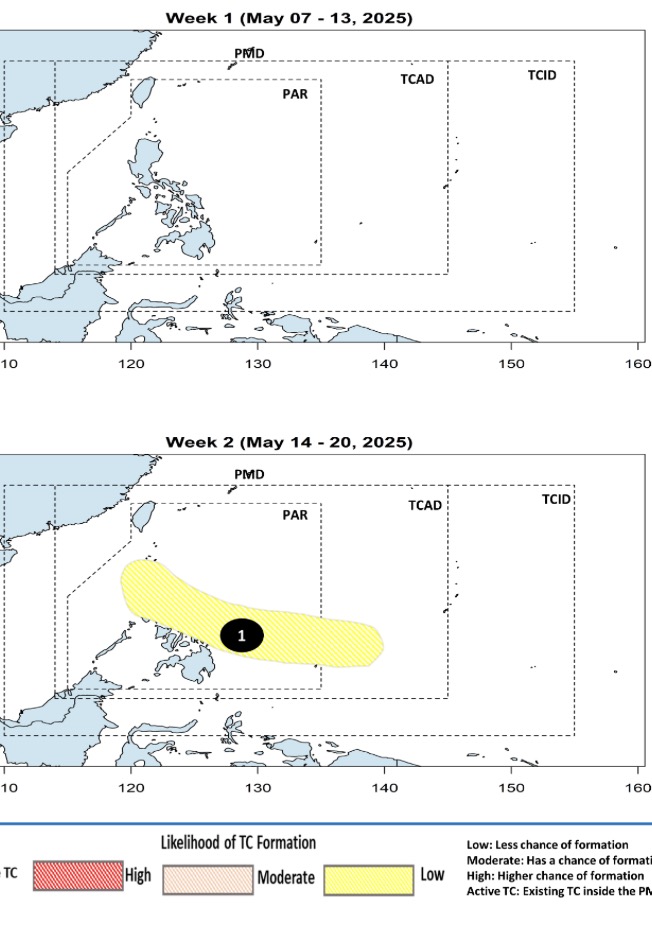The latest storm and low pressure information from the Philippine Atmospheric, Geophysical and Astronomical Services Administration (PAGASA) said that the low pressure area located in the northern part of the Sulu Sea will continue to cause rain in many areas of the Philippines on May 8.
According to PAGASA weather expert Benison Estareja, the low pressure was last detected 80 km northeast of Cuyo, Palawan, Philippines.
"This low pressure is not yet forecast to become a storm and is likely to dissipate within the next 24 hours. However, the low pressure will still bring rain to much of Southern Luzon, the Visayas and northern Mindanao, said Benison Estareja, a weather expert.

Meanwhile, PAGASA's weather bulletin on May 8 also noted that the easterly winds will cause rain in the rest of the Philippines, especially in eastern Luzon, Metro Manila area, as well as eastern Mindanao.
In the rest of Luzon and Mindanao, the sky is cloudy to clear with the possibility of scattered thunderstorms, especially in the afternoon and evening.
According to the latest storm forecast on May 7 from PAGASA, right after the low pressure is active near the East Sea, a new low pressure is forecast to form and is likely to enter the East Sea.
The bulletin said that during the week from May 14 to May 20, the low pressure near the East Sea is expected to appear at the eastern boundary of the Philippine PAR forecast area.

Current forecast models predict that this low pressure will have little chance of strengthening into a storm. However, throughout the forecast period, this low pressure will move northwest, near Visayas and Southern Luzon, with the possibility of passing through the Philippines and entering the East Sea.
PAGASA's early May forecast bulletin said that there are forecasts for 1 to 2 storms forming in the PAR area this month. At that time, PAGASA weather expert Benison Estareja predicted that the likelihood of typhoons would increase as the Philippines was entering the typhoon season.
"This year, in May 2025, we are expecting one or two tropical storms. The first will be named Auring, followed by Bising," he said.
An average of 20 typhoons occur in the Philippines each year, with 8-9 of them likely to make landfall. January to May every year is often considered a quiet period for tropical depression and storm activity in the northwest Pacific basin, an area that includes the Philippines.
According to PAGASA, in May and June, there may be 1 to 2 storms forming or entering the Philippine forecast area. From July, August and September 2025, there will be 2 to 3 storms/month.











